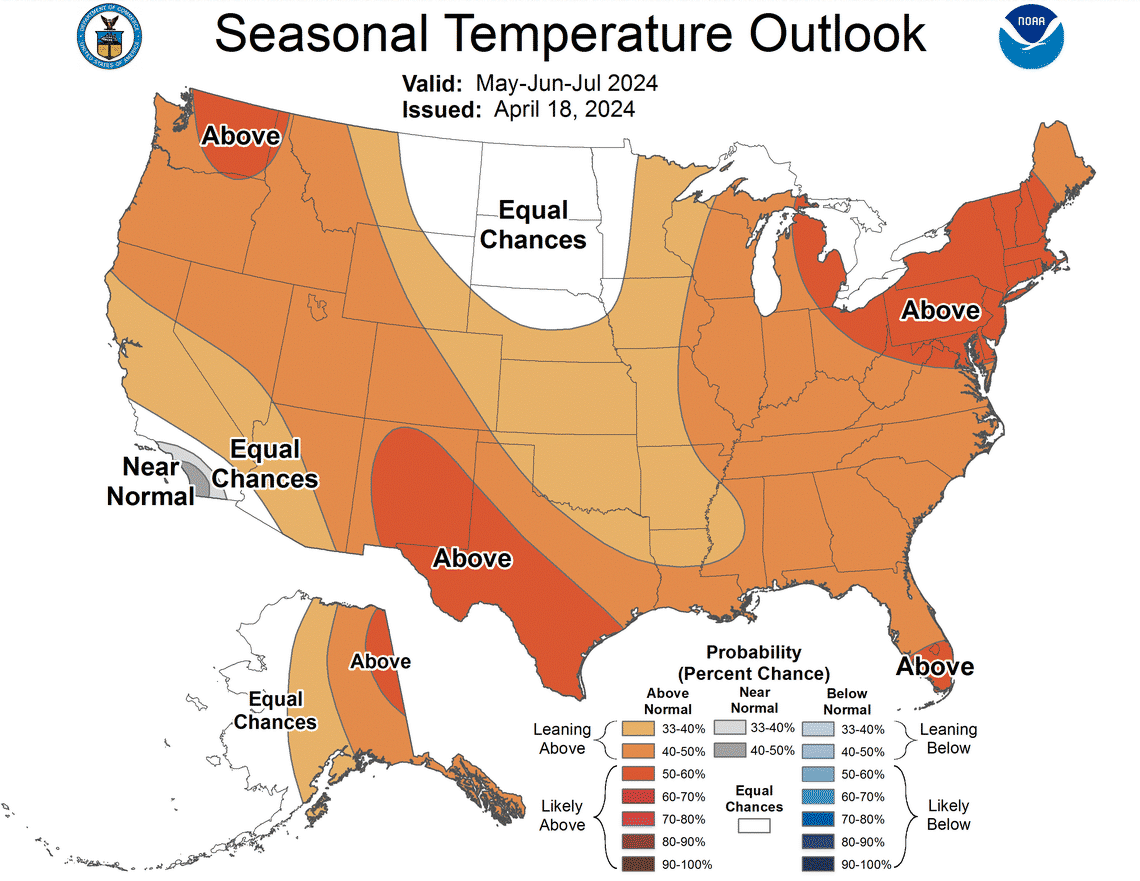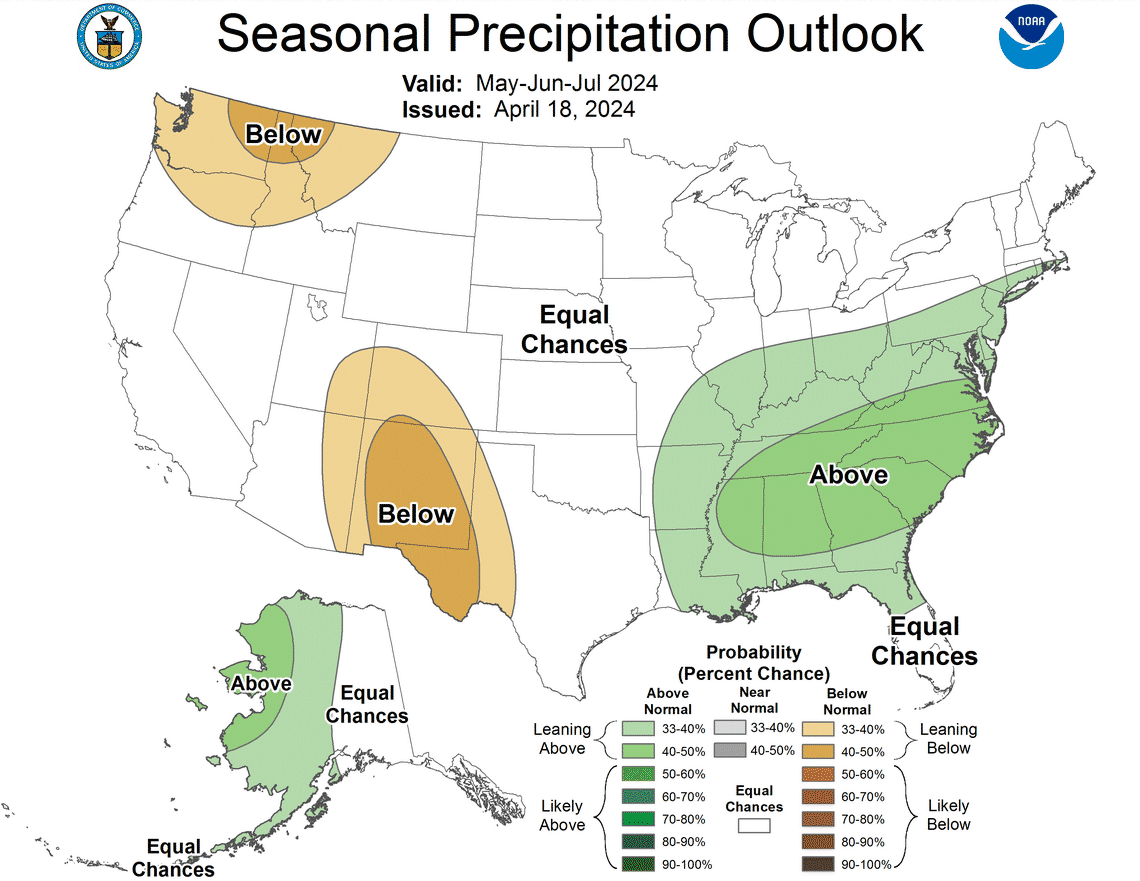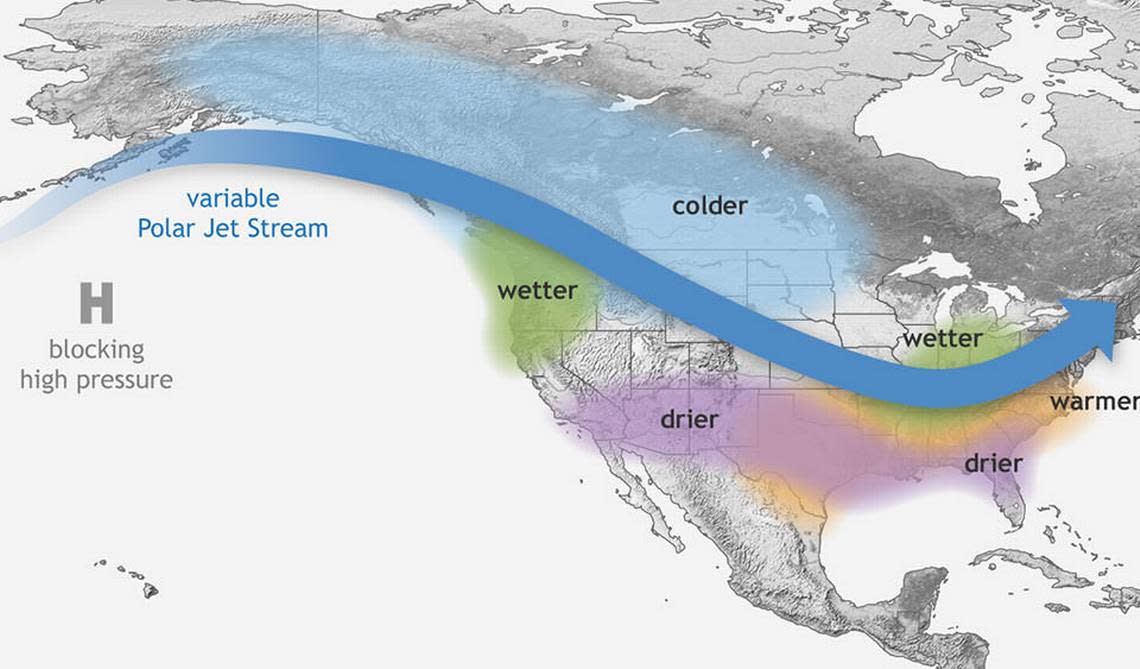Is a hot, muggy summer in store for Central Kentucky? A peek at the seasonal outlook
There’s a chance Kentucky could see a warmer, wetter summer than normal this year, which could bring increased chances of heat stress, flooding, agriculture impacts and serve as a boon for tick and mosquito populations.
The latest outlooks available from the nation’s Climate Prediction Center show Kentucky is leaning toward above-normal temperatures and precipitation between the months of May, June and July. Specifically, when it comes to temperature, the Climate Prediction Center puts the probability of above-normal conditions at 40 to 50%.
For precipitation, the probability is slightly lower, with a 33 to 40% chance of above-normal precipitation for the three-month period. So while it’s far from certain Kentucky will see a warmer, wetter summer, there’s still a good chance it will.


Is the Lexington area seeing above-normal rainfall?
Central Kentucky has seemingly broken from other parts of the state in that it’s been uniquely wet in the region. Between March 1 and Wednesday, Lexington has seen 9.81 inches of precipitation.
That’s less than normal for this time of year, but only by about half an inch, according to National Weather Service forecaster Tom Reaugh, who works in the agency’s Louisville office.
When you zoom out to look at the year to date, however, it’s much clearer the Lexington area is seeing more rain. According to Reaugh, since Jan. 1, Lexington has had just over 24 inches of precipitation, both as rainfall and melted snow.
That’s about 3 inches above what we normally see by this time of year, Reaugh said.
Weather systems conducive to rain and snow have persistently swept through the region this year.
“We’ve had several wet systems move through the region recently,” Reaugh told the Herald-Leader in an interview Thursday. “We’ve been above normal pretty much the whole year.”
What does the return of La Niña mean?
La Niña and El Niño are weather phenomena that can be defined in contrast with one another.
El Niño, or in Spanish, “the boy,” occurs when the central and eastern regions of the Pacific Ocean get warmer sea surface temperatures. Conversely, La Niña, “the girl,” happens when those same sea surface temperatures are cooler than average. These two phenomena are part of a cycle that repeats about every two to seven years, and influence weather around the world.
The effects of La Niña and El Niño are strongest in the winter. During an El Niño winter, conditions in the northern half of the U.S. are typically warmer and drier than the average, while the southern half experiences cooler, wetter weather.
La Niña winters generally mean warmer, drier conditions in the South and cooler, wetter conditions in the northern U.S. and Canada.

In a new outlook the Climate Prediction Center published Thursday, the center’s main takeaway was a transition from El Niño to neutral conditions is likely to occur in the next month. Additionally, the center is increasingly confident a La Niña may develop between June and August (a 49% chance) or July to September (a 69% chance).
If that outlook holds up, it’s likely we’ll see a La Niña winter later this year and early next. In Kentucky, that generally translates to wetter conditions than normal.
Do you have questions about weather in Kentucky for our service journalism team? We want to help. Send an email to us at ask@herald-leader.com or submit them with the Know Your Kentucky form below.
